Fragrant Fish En Papillote Recipe: Fancy Yet Foolproof
Delicate white fish nestled in parchment paper creates a magical culinary experience that surprises and delights.
Sealed packets trap aromatic herbs and delicate flavors, transforming simple ingredients into an elegant meal.
Cooking in paper might sound intimidating, but this method ensures tender, moist seafood with minimal effort.
Steam gently infuses each flaky morsel with incredible depth and complexity.
Mediterranean and French chefs have long embraced this technique for its elegant simplicity.
Wrapped parcels emerge from the oven like little gifts, promising a sensory adventure that feels both sophisticated and comforting.
You’ll want to master this technique and impress everyone at your dinner table.
Why Fish En Papillote Is A Delight
Ingredients For Fish En Papillote
Main Fish Ingredient:Vegetable Ingredients:Seasoning and Cooking Ingredients:Cooking Wrapper:Cooking Instructions For Fish En Papillote
Step 1: Warm Up The Oven
Crank your oven to a toasty 400°F (200°C) so it’s perfectly heated and ready for cooking.
Step 2: Prepare Cooking Wrap
Slice large parchment paper squares about 12×12 inches for each serving, ensuring you have enough to create cozy fish packets.
Step 3: Build Flavor Bundles
Place a beautiful fish fillet in the center of each parchment square. Add these delightful ingredients:Drizzle everything with smooth olive oil and sprinkle with salt, black pepper, and chopped fresh herbs for an explosion of taste.
Step 4: Craft Sealed Packets
Gently fold the parchment paper over the fish and vegetables, carefully crimping and sealing the edges to create a tight, secure packet that will trap all the delicious moisture.
Step 5: Bake To Perfection
Arrange the packets on a baking sheet and slide into the preheated oven.
Cook for 12-15 minutes, depending on how thick your fish fillets are.
Step 6: Unveil And Serve
Carefully open the steamy packets right at the table, releasing an incredible aroma.
Serve the fish directly in its parchment wrapper for a stunning and dramatic presentation that will impress everyone.
Helpful Tips For Fish En Papillote
Flavor Variations For Fish En Papillote
Pairings That Work With Fish En Papillote
Storing Fish En Papillote Safely
FAQs
It’s a French technique where food is baked inside a folded parchment paper packet, which helps steam and lock in moisture, creating tender and flavorful dishes with minimal added fat.
Absolutely! Salmon, cod, halibut, sea bass, and tilapia work great. Choose fresh, firm white fish or fatty fish that can withstand gentle baking without falling apart.
Check that the fish is opaque and flakes easily with a fork. The internal temperature should reach 145°F (63°C), which ensures it’s fully cooked but still moist and tender.
Print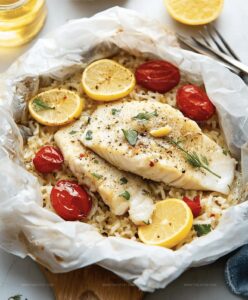
Simple Fish En Papillote Recipe
- Total Time: 35 minutes
- Yield: 4 1x
Description
Mediterranean fish en papillote combines delicate seafood with zesty herbs and vegetables in a parchment-paper package. Simple preparation yields elegant results that delight diners with fresh, aromatic flavors you’ll savor to the last bite.
Ingredients
Main Ingredients:
- 4 fish fillets (salmon, cod, or tilapia)
- 1 zucchini (thinly sliced)
- 1 cup cherry tomatoes (halved)
Aromatics and Herbs:
- 2 tablespoons fresh herbs (thyme, dill, or parsley)
- 2 cloves garlic (minced)
- 2 lemon slices
Seasoning and Cooking Essentials:
- 2 tablespoons olive oil
- 1 teaspoon salt
- 1/2 teaspoon black pepper
- 1 parchment paper sheet
Instructions
- Prepare the kitchen workspace and gather all necessary tools for creating delicate fish parcels.
- Heat the culinary environment to 400F (200C), ensuring precise temperature for optimal cooking.
- Craft individual parchment sanctuaries approximately 12×12 inches, designed to cradle each seafood portion.
- Strategically position the fish fillet at the center of each paper landscape, creating a delicious foundation.
- Embellish the fish with vibrant lemon medallions, ruby-like cherry tomatoes, and tender zucchini slices.
- Scatter fragrant minced garlic across the delicate arrangement for enhanced aromatic complexity.
- Anoint the composition with a gentle cascade of olive oil, ensuring smooth flavor distribution.
- Season the ensemble with a delicate sprinkle of salt, cracked pepper, and verdant fresh herbs.
- Execute a precise paper-folding technique, carefully crimping edges to form a hermetic culinary envelope.
- Transfer the sealed parcels onto a reliable baking sheet, maintaining their elegant structure.
- Allow the fish to transform within its parchment sanctuary for 12-15 minutes, depending on the fillet’s unique thickness.
- Unveil the packets with graceful precision, presenting each guest with a steaming, aromatic surprise directly within its paper cocoon.
Notes
- Customize fish selection by choosing sustainable, fresh white fish like cod, halibut, or tilapia for optimal texture and flavor.
- Experiment with herb combinations like dill, thyme, or parsley to enhance the aromatic profile and complement the delicate fish.
- Use parchment paper carefully to ensure tight sealing, preventing steam from escaping and maintaining moisture during cooking.
- Adjust cooking time based on fish thickness, checking for translucent, flaky texture to avoid overcooking and drying out the seafood.
- Prep Time: 20 minutes
- Cook Time: 15 minutes
- Category: Lunch, Dinner, Appetizer
- Method: Baking
- Cuisine: French
Nutrition
- Serving Size: 4
- Calories: 220 kcal
- Sugar: 2 g
- Sodium: 150 mg
- Fat: 12 g
- Saturated Fat: 2 g
- Unsaturated Fat: 9 g
- Trans Fat: 0 g
- Carbohydrates: 5 g
- Fiber: 1.5 g
- Protein: 25 g
- Cholesterol: 55 mg

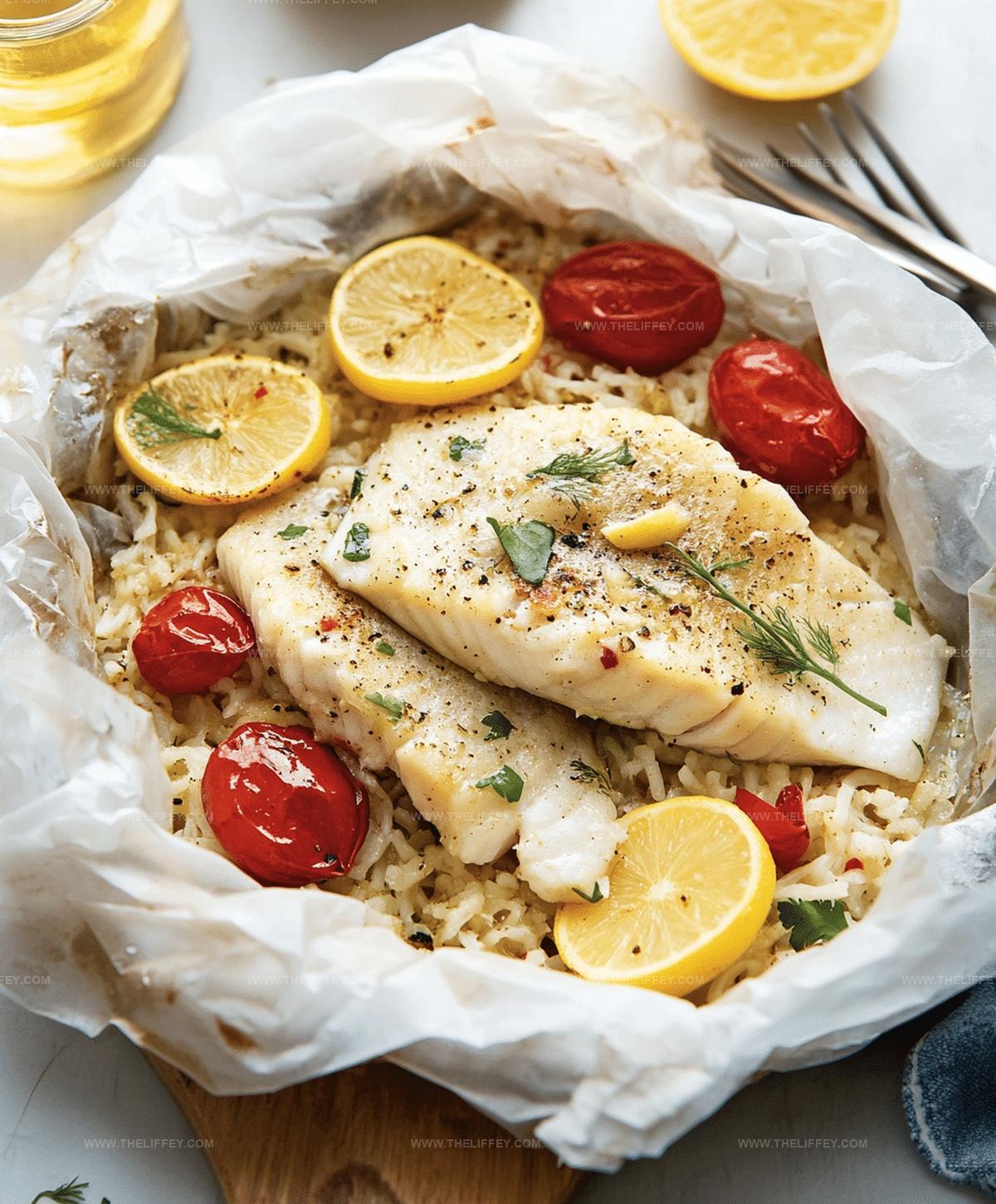
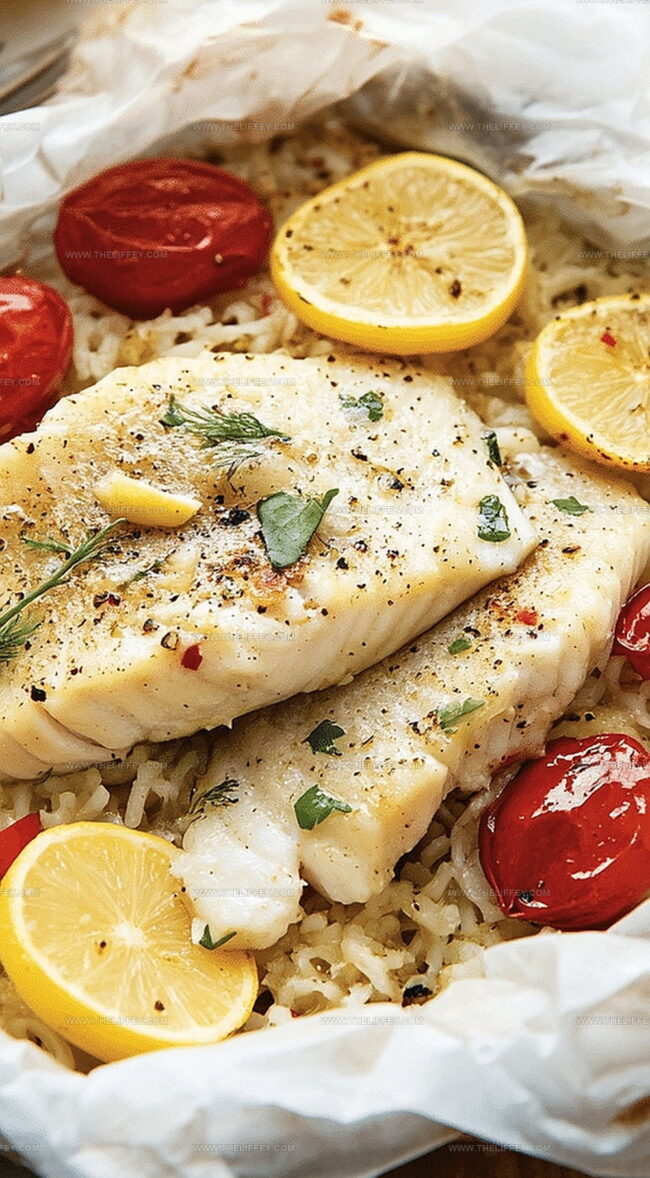
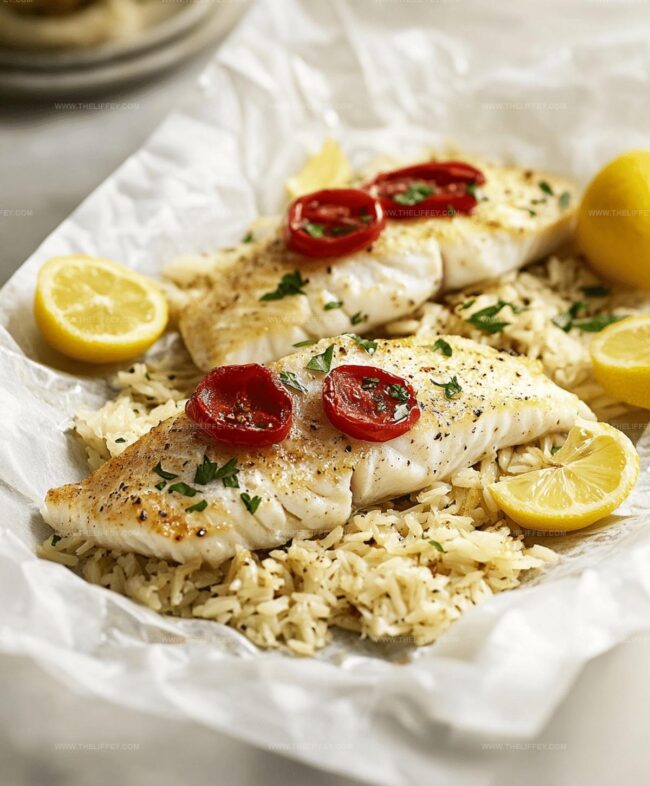
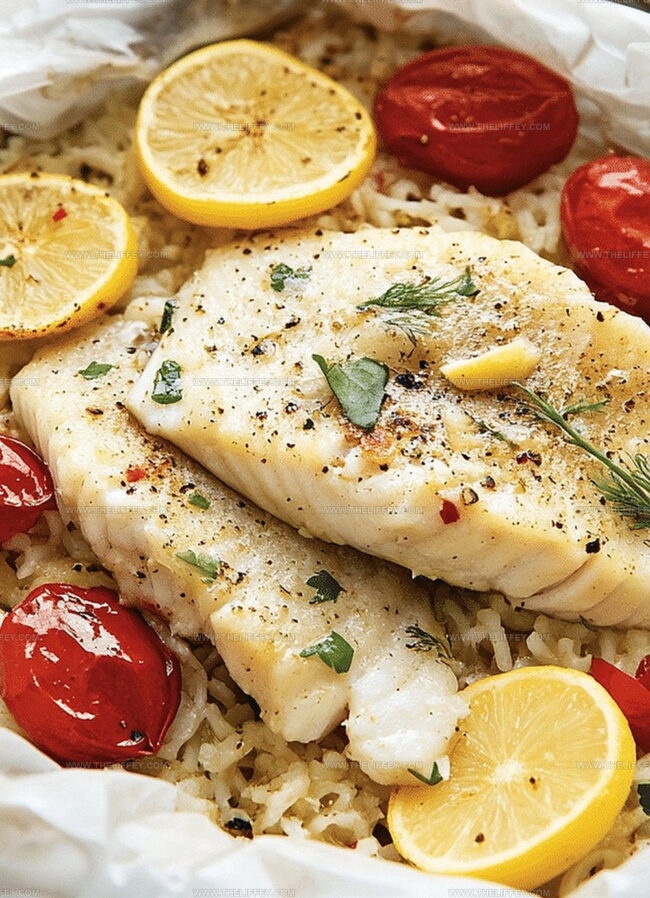
John Conley
Founder & Culinary Storyteller
Expertise
Recipe Development, Culinary Writing, Home Cooking Techniques, Seasonal Ingredient Utilization
Education
Lane Community College, Eugene, OR
Certificate in Culinary Arts
Focused on foundational cooking techniques, kitchen safety, and menu planning.
Gotham Writers Workshop, New York, NY
Course in Food Writing
Explored the art of crafting engaging culinary narratives and recipe development.
John grew up where food meant connection: big bowls, warm kitchens, and meals that told a story. After earning his Certificate in Culinary Arts from Lane Community College and diving deep into food writing at Gotham Writers Workshop, he found his calling: turning everyday recipes into something worth savoring.
At The Liffey, John’s focus is all about crafting dishes that feel easy, honest, and full of heart.